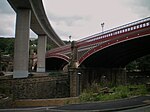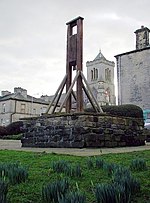Phoenix Radio
CalderdaleCompanies based in Halifax, West YorkshireRadio stations established in 2007Radio stations in YorkshireUse British English from August 2012
Phoenix Radio 96.7 FM is a local radio station based in Halifax, in West Yorkshire, England. It broadcasts on the FM frequency, 24 hours a day to the Metropolitan Borough of Calderdale, and the surrounding areas and around the world online. It is owned and run by Phoenix Radio Ltd, which has also previously held six Restricted Service Licences (RSLs) in the past. It was awarded its full-time licence by OFCOM, thus becoming, on 10 December 2007, Calderdale's first and only local radio station.
Excerpt from the Wikipedia article Phoenix Radio (License: CC BY-SA 3.0, Authors).Phoenix Radio
Dean Clough, Calderdale
Geographical coordinates (GPS) Address Nearby Places Show on map
Geographical coordinates (GPS)
| Latitude | Longitude |
|---|---|
| N 53.7276 ° | E -1.8635 ° |
Address
Dean Clough
Dean Clough
HX3 5AR Calderdale
England, United Kingdom
Open on Google Maps








